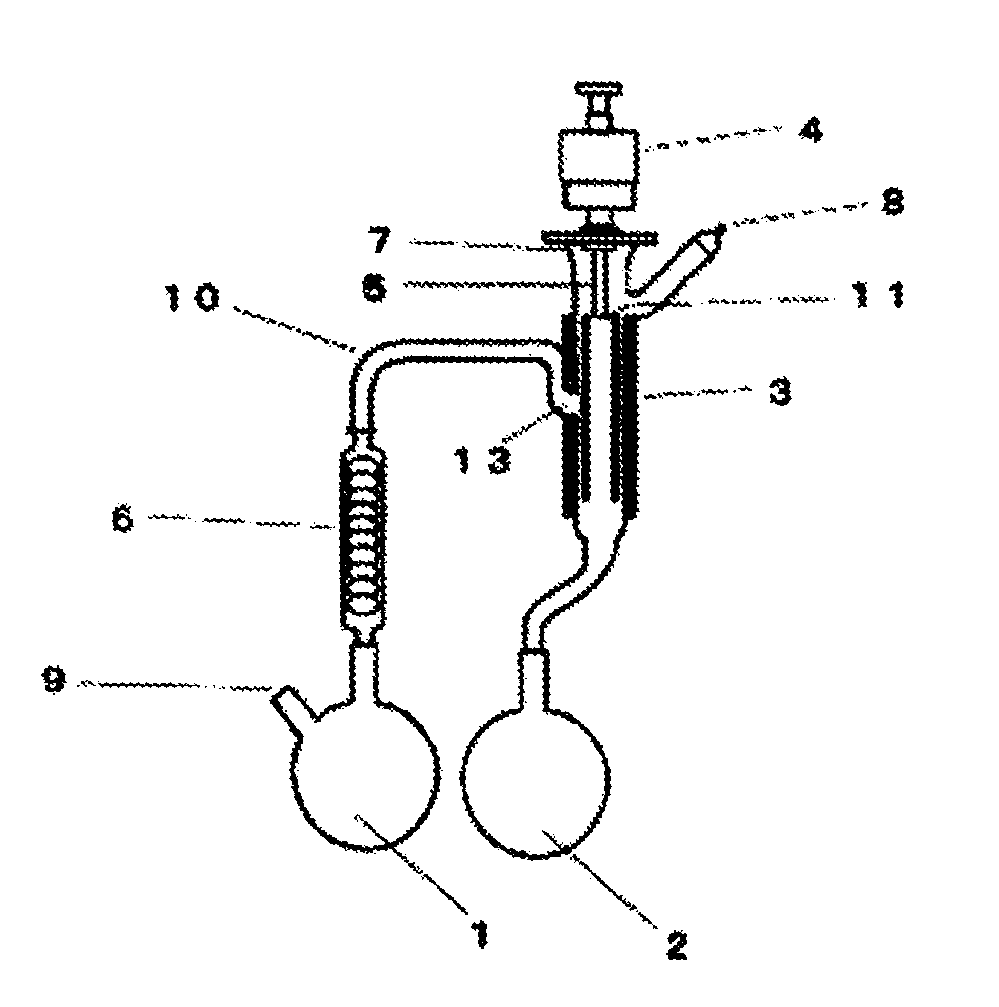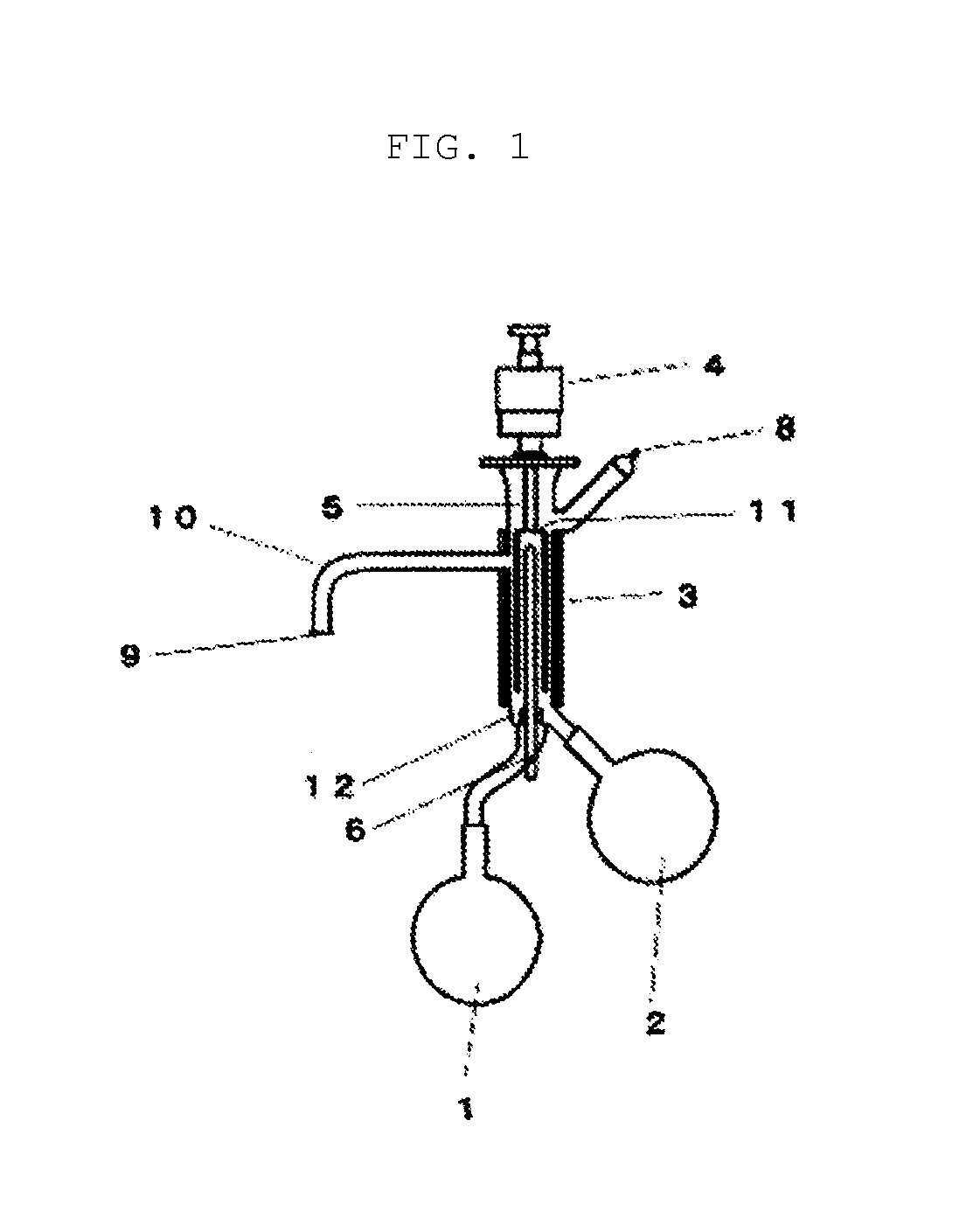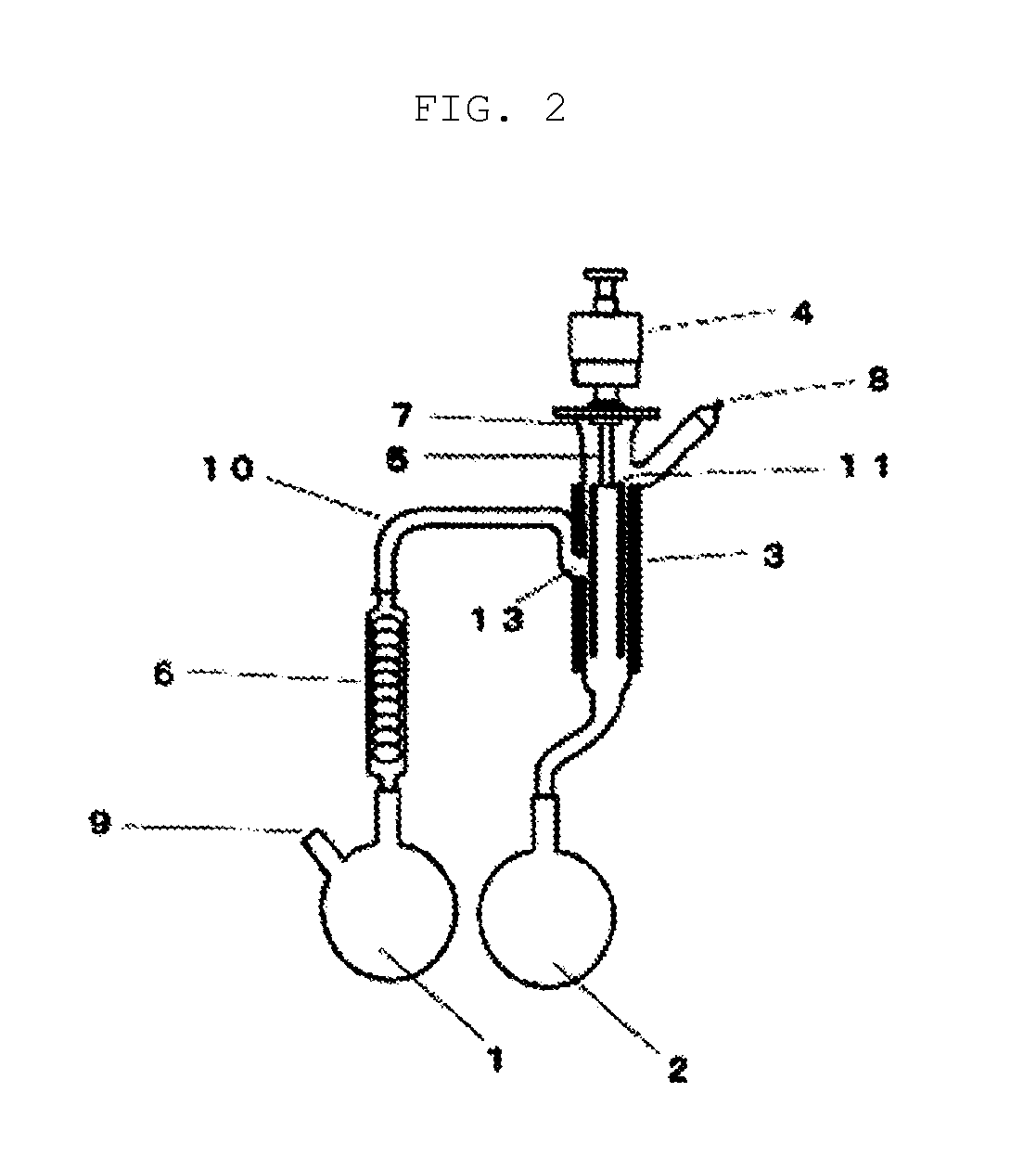Vinyl sulfonic acid, polymer thereof, and production method thereof
a technology of sulfonate and polymer, applied in the field of sulfonate, can solve the problems of metal or impurity contamination, insufficient polymerization, and product functioning as proton conductive polymers, and achieve the effects of suppressing the degradation of compounds, reducing the content of sulfonates, and high ratio
- Summary
- Abstract
- Description
- Claims
- Application Information
AI Technical Summary
Benefits of technology
Problems solved by technology
Method used
Image
Examples
example i-1
Sodium Removal Treatment Using Strongly-Acidic Ion-Exchange Resin and Thin-Film Distillation
[0321]A column tower having an internal diameter of 200 mm and a height of 900 mm was filled with 26 L of a strongly-acidic ion-exchange resin (DOWEX (registered trademark) Monosphere 650C) which had been regenerated with hydrochloric acid in advance. A sodium removal treatment was carried out by flowing 12.2 kg of a 25 wt. % aqueous solution of sodium vinyl sulfonate (N-SVS-25, manufactured by Asahi Kasei Fine Chemicals Co., Ltd.) in from the bottom of the column, and then washing from the bottom of the column with 100 kg of ion-exchanged water. The sodium removal rate determined based on the acid value before and after the one-time sodium removal treatment was 98.4%. Further, the yield was 94.3%. 300 kg of dilute vinyl sulfonic acid composition obtained by this sodium removal treatment was concentrated under reduced pressure.
[0322]4.2 kg of the obtained vinyl sulfonic acid composition was c...
example i-2
Sodium Removal Treatment Using Strongly-Acidic Ion-Exchange Resin and Thin-Film Distillation
[0324]A column tower having an internal diameter of 200 mm and a height of 900 mm was filled with 26 L of a strongly-acidic ion-exchange resin (DOWEX (registered trademark) Monosphere 650C) which had been regenerated with hydrochloric acid in advance. A sodium removal treatment was carried out by flowing 12.2 kg of a 25 wt. % aqueous solution of sodium vinyl sulfonate (N-SVS-25, manufactured by Asahi Kasei Fine Chemicals Co., Ltd.) in from the bottom of the column, and then washing from the bottom of the column with 100 kg of ion-exchanged water. The sodium removal rate determined based on the acid value before and after the one-time sodium removal treatment was 96.5%. Further, the yield was 97.0%. 300 kg of dilute vinyl sulfonic acid composition obtained by this sodium removal treatment was concentrated under reduced pressure.
[0325]5.2 kg of the obtained vinyl sulfonic acid composition was c...
example i-3
Sodium Removal Treatment Using Strongly-Acidic Ion-Exchange Resin and Thin-Film Distillation
[0327]A column tower having an internal diameter of 200 mm and a height of 900 mm was filled with 26 L of a strongly-acidic ion-exchange resin (DOWEX (registered trademark) Monosphere 650C) which had been regenerated with hydrochloric acid in advance. A sodium removal treatment was carried out by flowing 12.2 kg of a 25 wt. % aqueous solution of sodium vinyl sulfonate (N-SVS-25, manufactured by Asahi Kasei Fine Chemicals Co., Ltd.) in from the bottom of the column, and then washing from the bottom of the column with 100 kg of ion-exchanged water. The sodium removal rate determined based on the acid value before and after the one-time sodium removal treatment was 96.8%. Further, the yield was 95.3%. 400 kg of dilute vinyl sulfonic acid composition obtained by this sodium removal treatment was concentrated under reduced pressure.
[0328]8.3 kg of the obtained vinyl sulfonic acid composition was c...
PUM
| Property | Measurement | Unit |
|---|---|---|
| corrosion resistance | aaaaa | aaaaa |
| electric/electronic | aaaaa | aaaaa |
| conductive | aaaaa | aaaaa |
Abstract
Description
Claims
Application Information
 Login to View More
Login to View More - R&D
- Intellectual Property
- Life Sciences
- Materials
- Tech Scout
- Unparalleled Data Quality
- Higher Quality Content
- 60% Fewer Hallucinations
Browse by: Latest US Patents, China's latest patents, Technical Efficacy Thesaurus, Application Domain, Technology Topic, Popular Technical Reports.
© 2025 PatSnap. All rights reserved.Legal|Privacy policy|Modern Slavery Act Transparency Statement|Sitemap|About US| Contact US: help@patsnap.com



